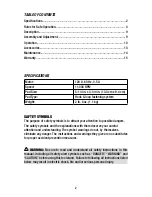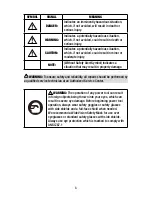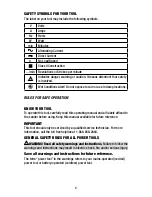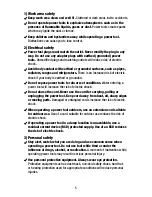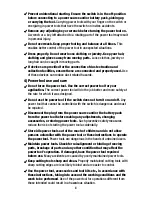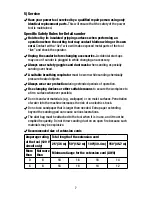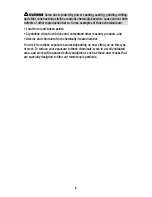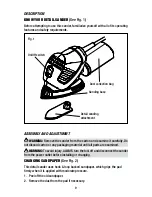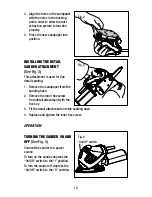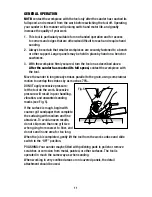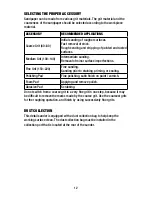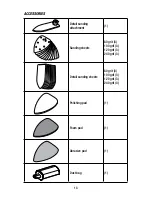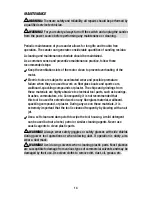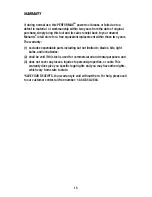
14
MAINTENANCE
WARNING:
To ensure safety and reliability, all repairs should be performed by
a qualified service technician.
WARNING!
For your safety, always turn off the switch and unplug the sander
from the power source before performing any maintenance or cleaning.
Periodic maintenance of your sander allows for long life and trouble-free
operation. The sander can generate considerable quantities of sanding residue.
A cleaning and maintenance schedule should be maintained.
As a common-sense and preventive maintenance practice, follow these
recommended steps:
Keep the ventilation slots of the motor clean to prevent overheating of the
motor.
Electric tools are subject to accelerated wear and possible premature
failure when they are used to work on fiberglass boats and sports cars,
wallboard, spackling compounds or plaster. The chips and grindings from
these materials are highly abrasive to electrical tool parts, such as bearings,
brushes, commutators, etc. Consequently, it is not recommended that
this tool be used for extended work on any fiberglass material, wallboard,
spackling compound, or plaster. During any use on these materials, it is
extremely important
that the tool is cleaned frequently by blowing with an air
jet.
Use a soft clean and damp cloth to wipe the tool housing. A mild detergent
can be used but not alcohol, petrol or similar cleaning agents. Never use
caustic agents to clean plastic parts.
WARNING!
Always wear safety goggles or safety glasses with side shields
during power tool operations or when blowing dust. If operation is dusty, also
wear a dust mask.
WARNING!
Avoid using solvents when cleaning plastic parts. Most plastics
are susceptible to damage from various types of commercial solvents and may be
damaged by their use. Use clean cloths to remove dirt, dust, oil, grease, etc.
Summary of Contents for 241-0964
Page 16: ...16...


